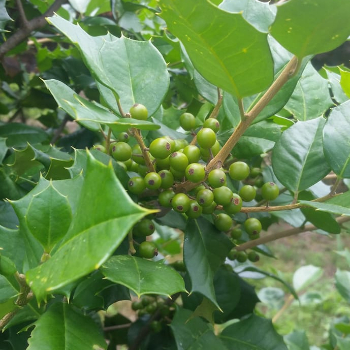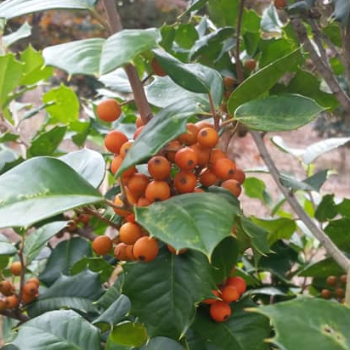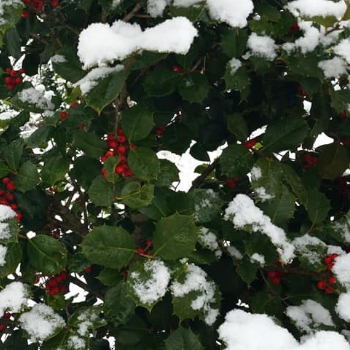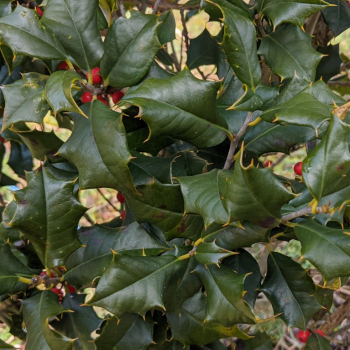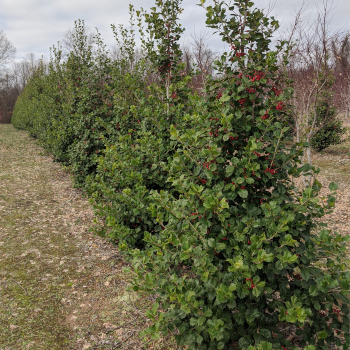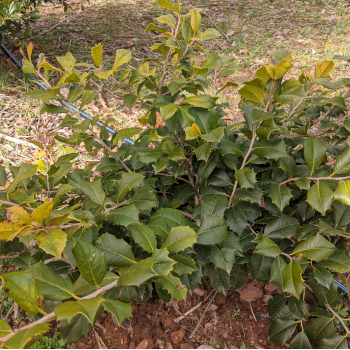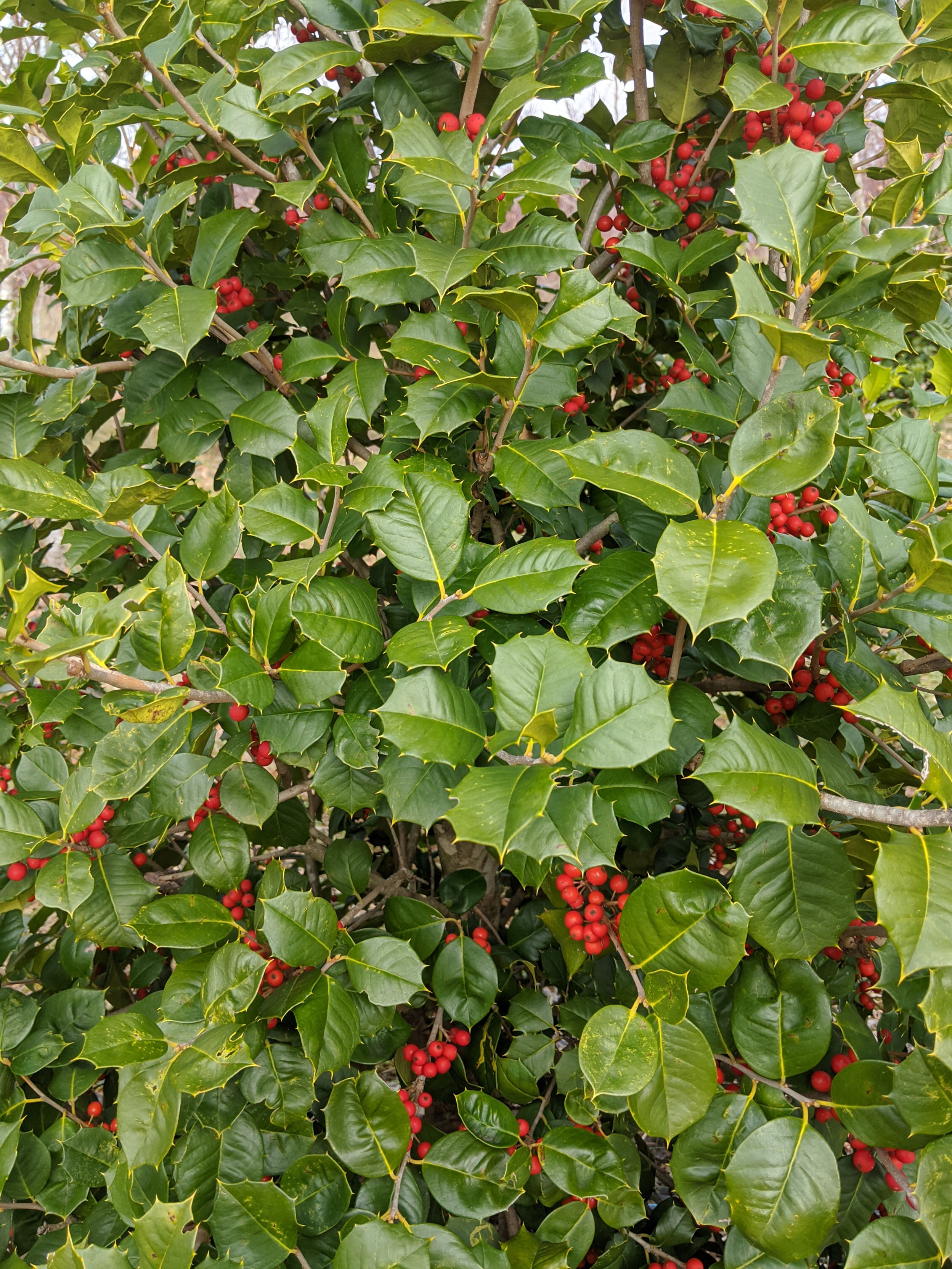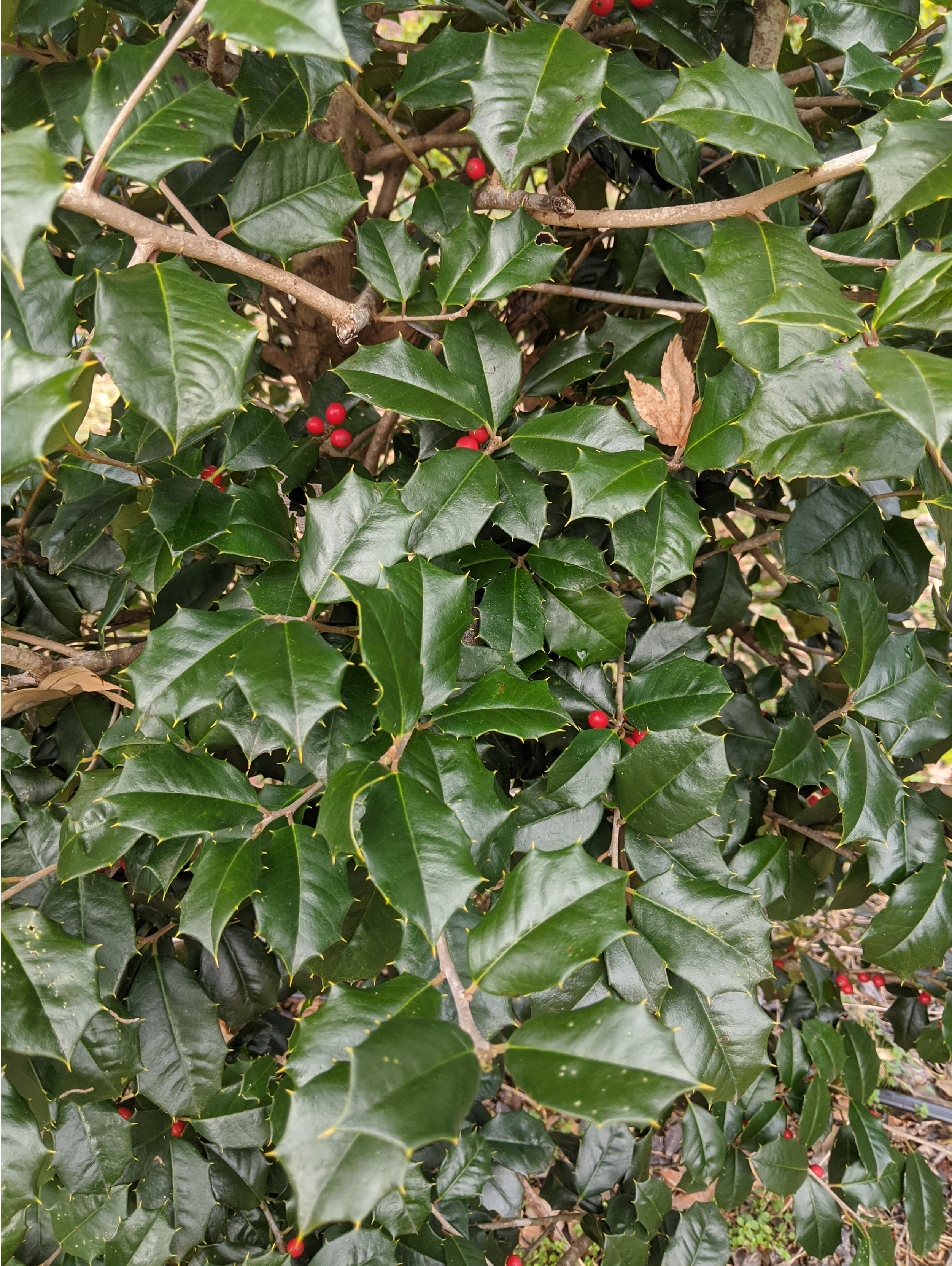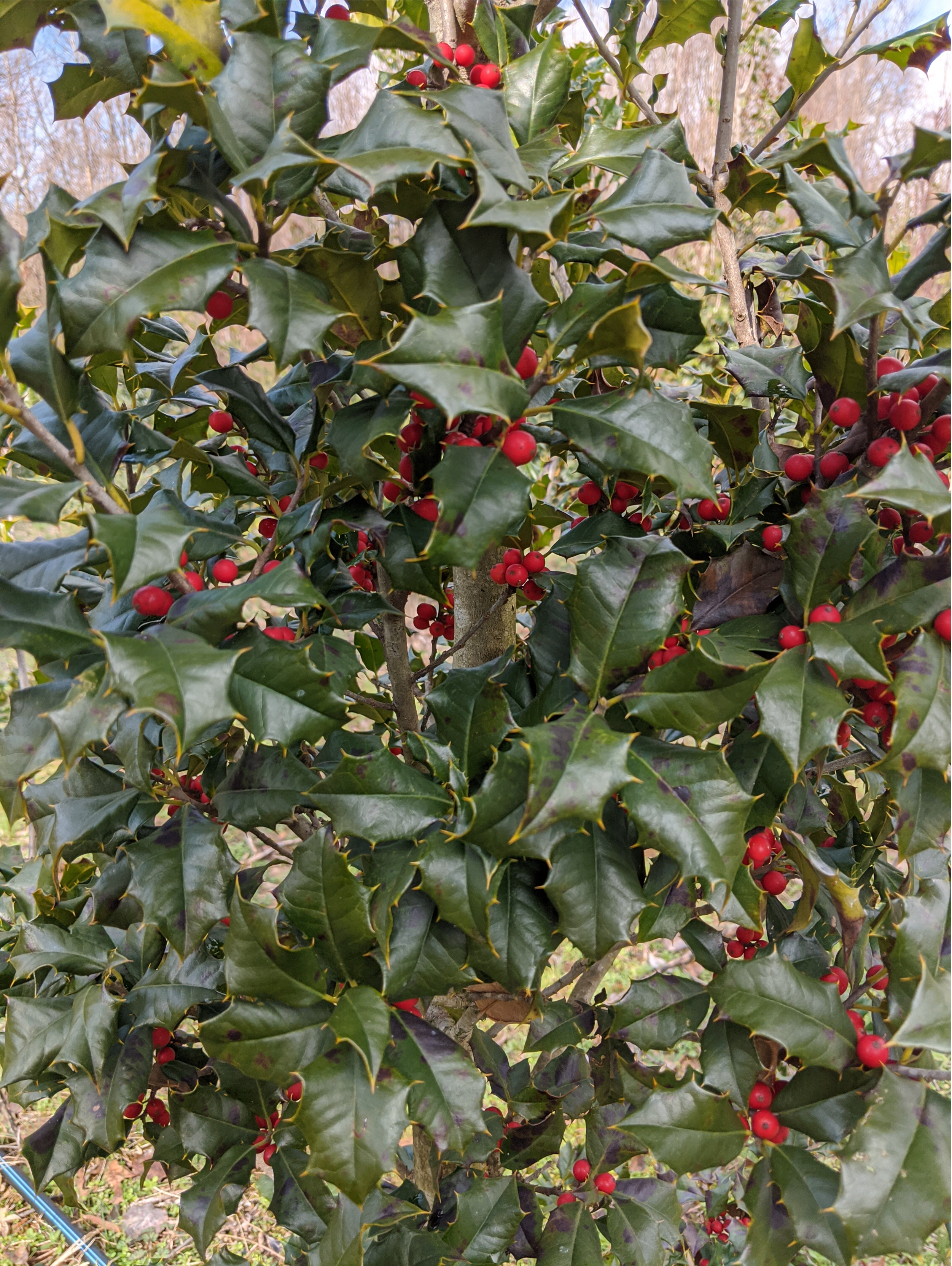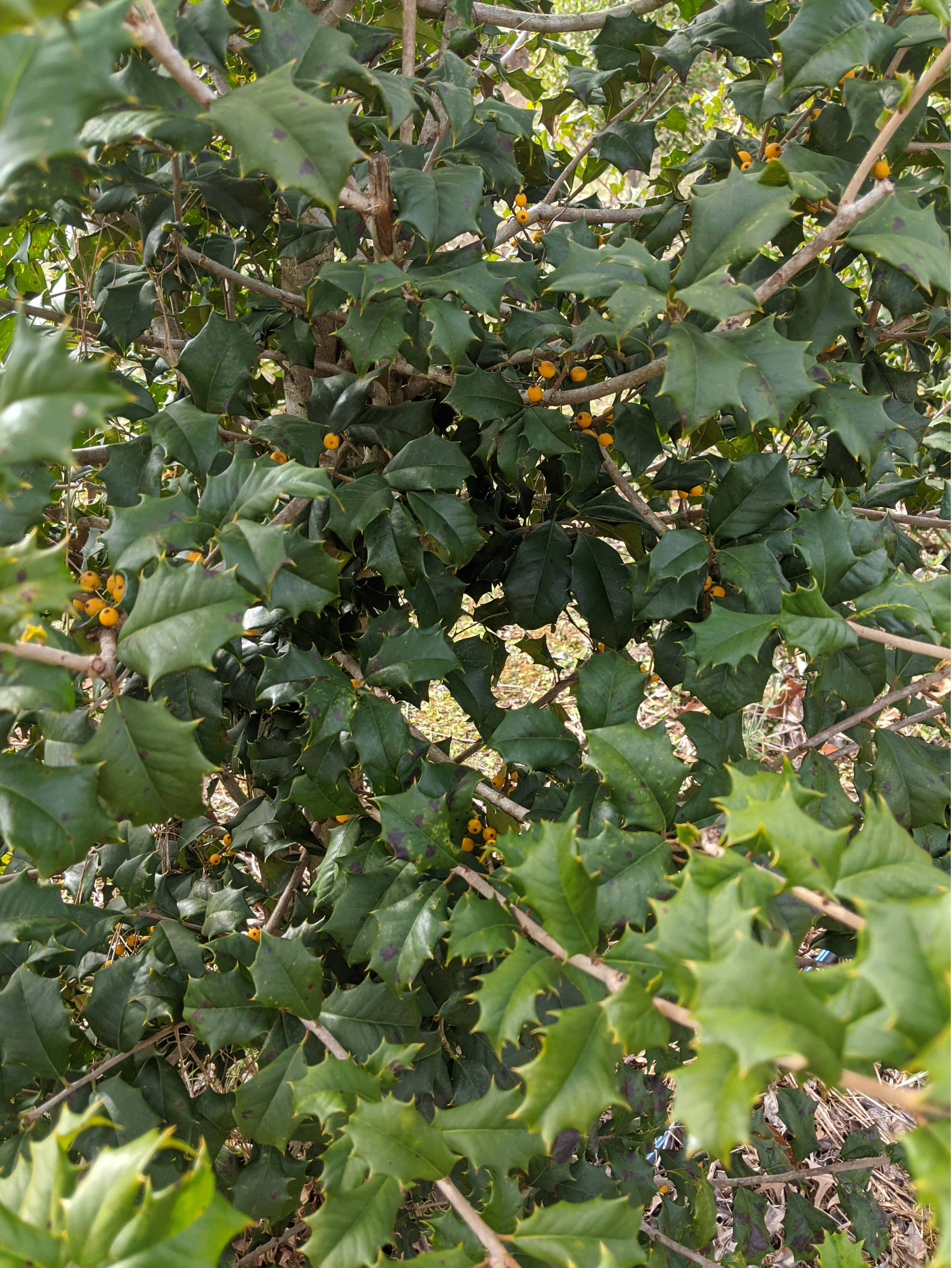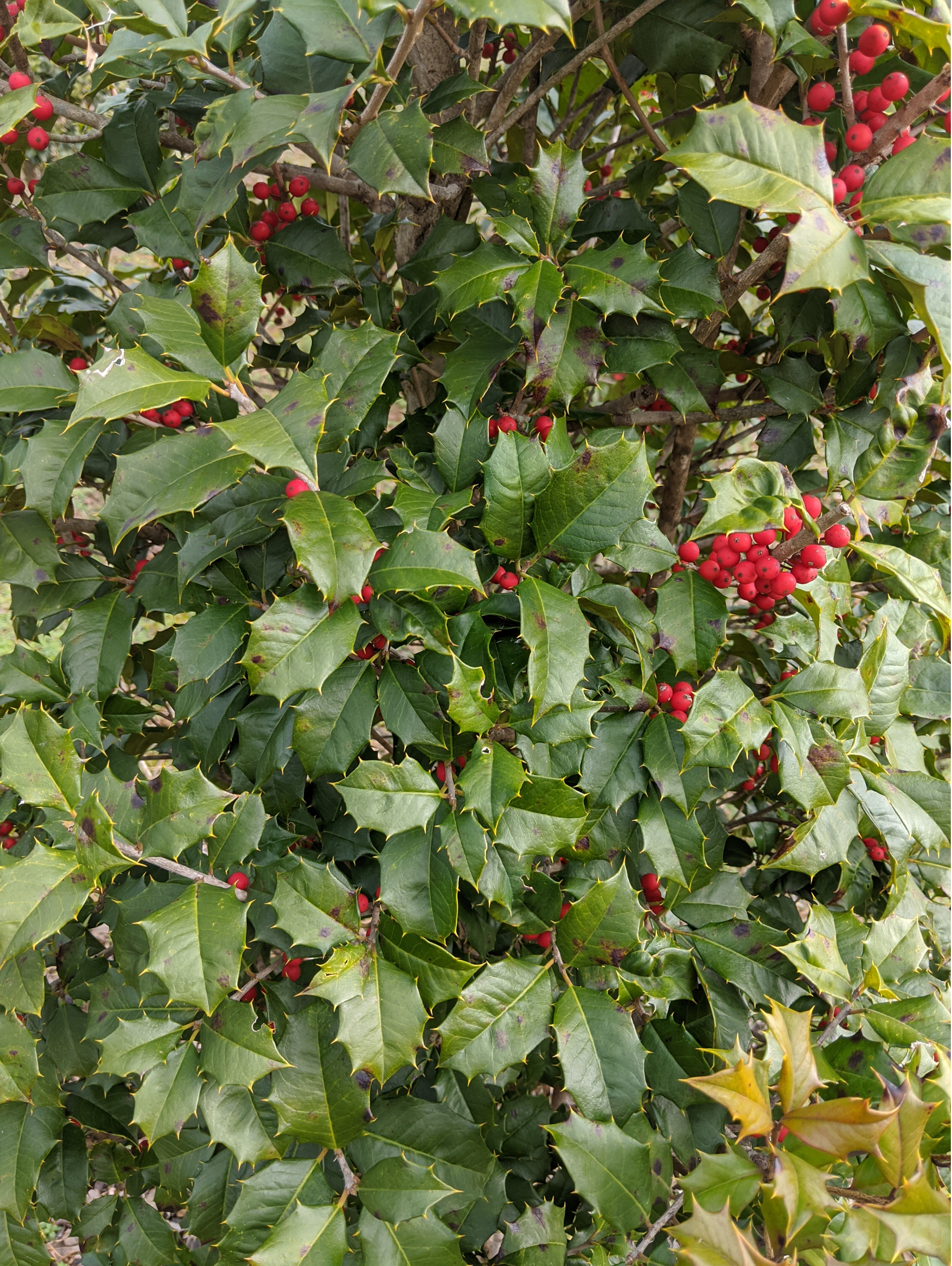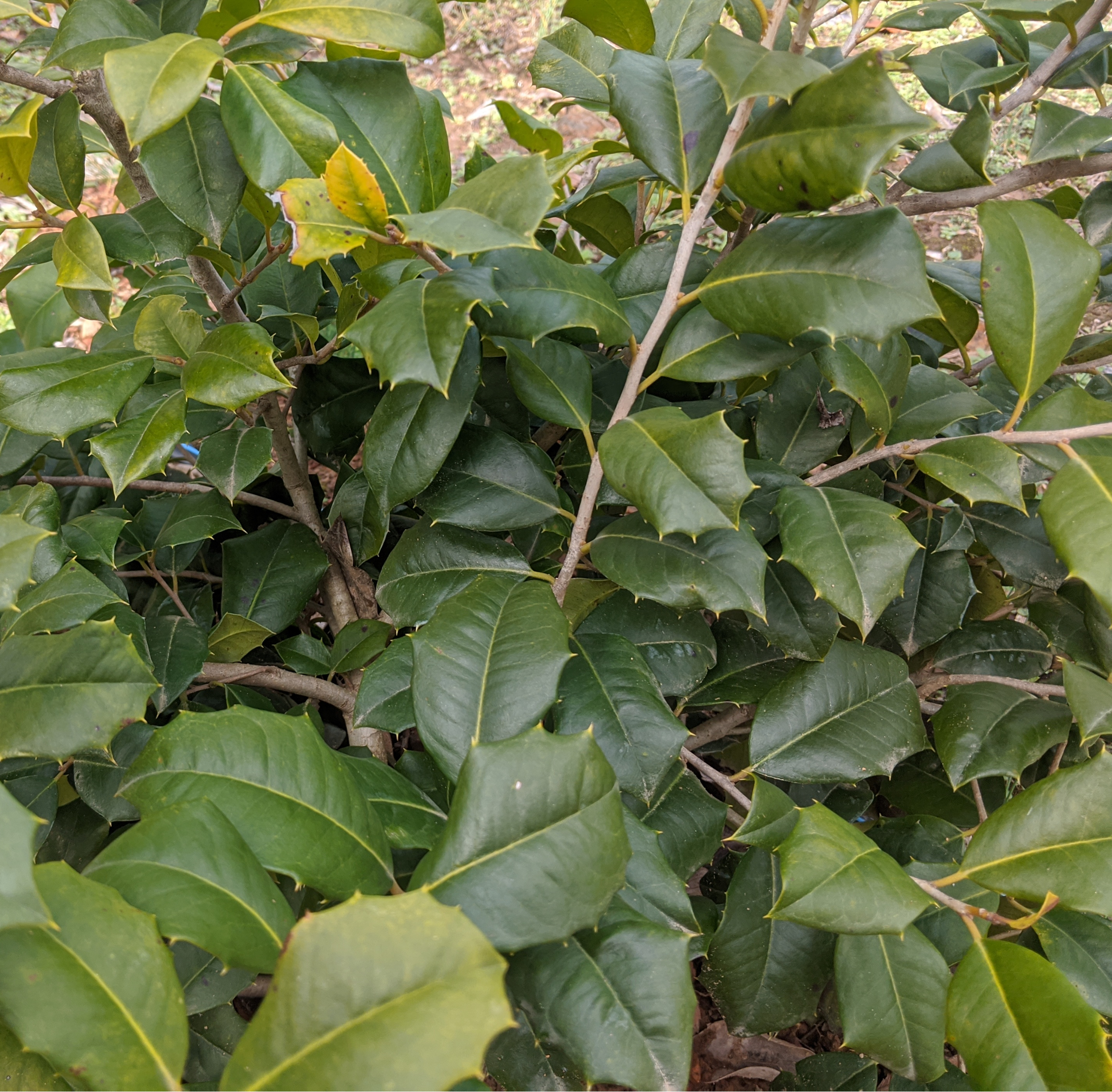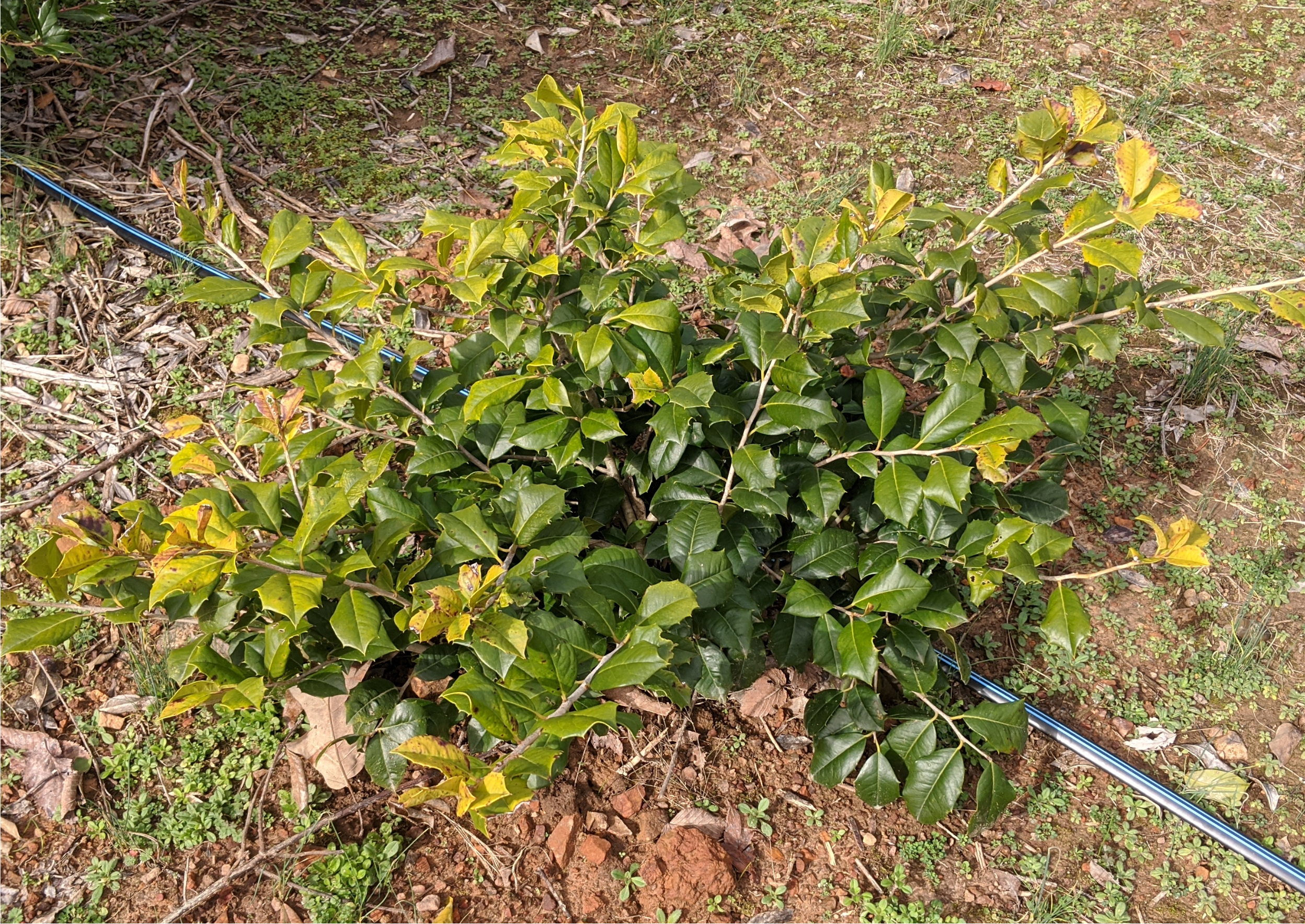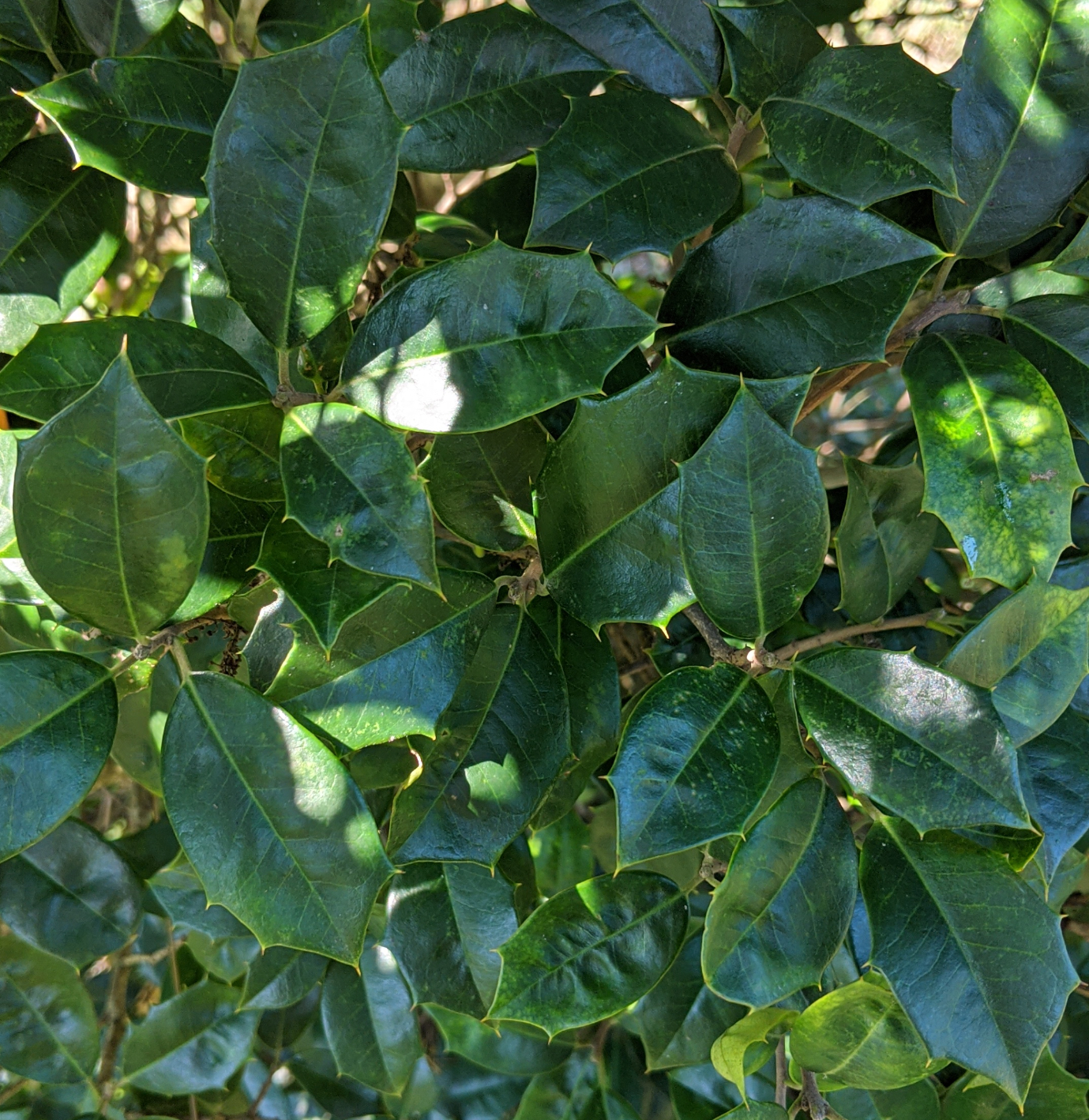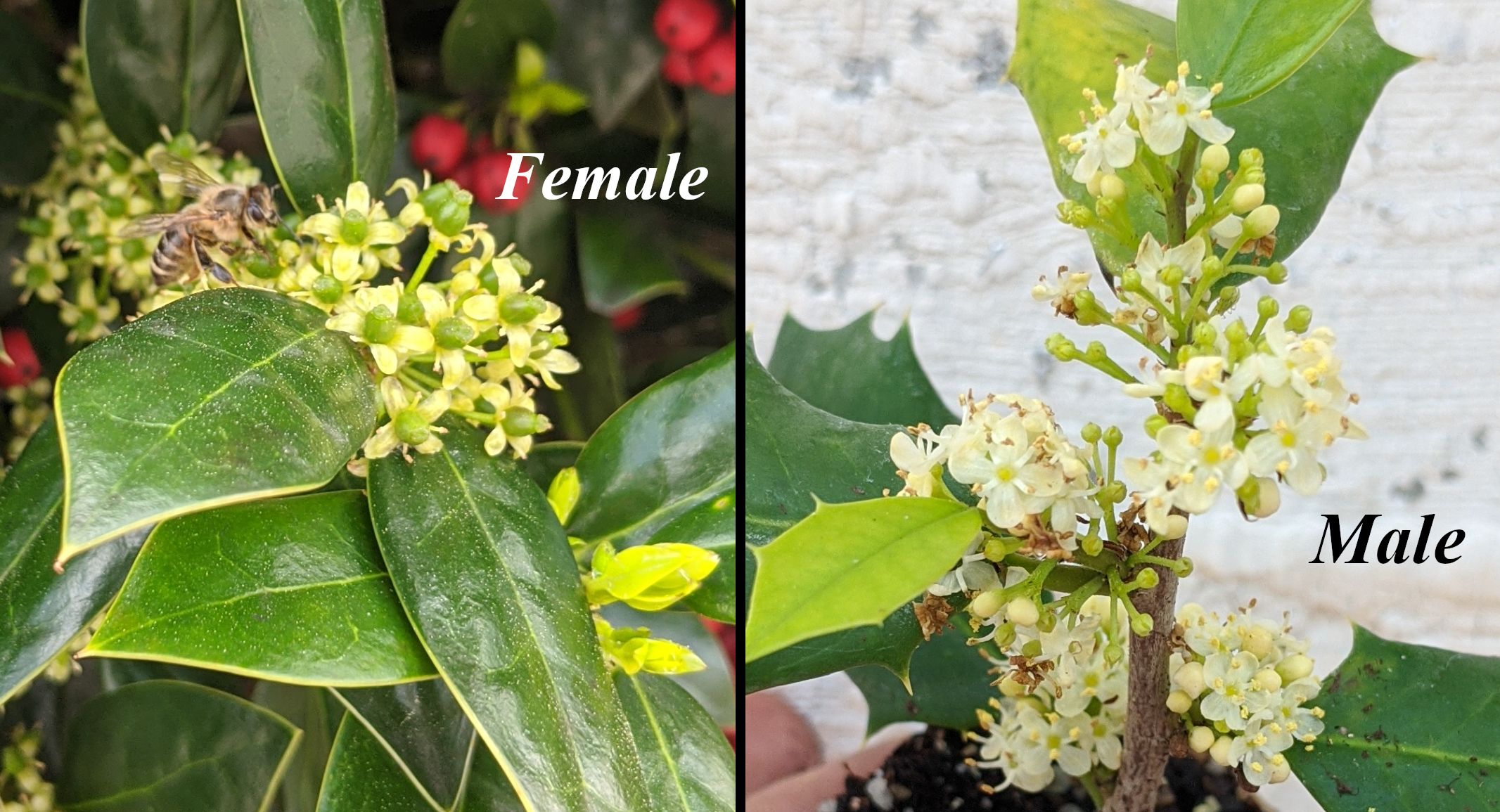According to Michael A. Dirr's Manual of Woody Landscape Plants ...
Popular Female Varieties:
Amy, Angelica, Cardinal, Canary, Carolina, Croonenburg*, Farage, Goldie, Greenleaf, Howard, Jersey Princess, Judy Evans, Manig, Maryland Dwarf, Merry Christmas, Miss Courtney, Miss Helen, Morgan Gold, Old Heavy Berry, Satyr Hill, Stewart's Silver Crown, Wyetta
Popular Male Varieties:
Jersey Knight - It is difficult to identify another comparably popular American Holly male cultivar. Inspite of numerous male cultivars released each year (Holly Society of America - Holly Cultivar Registrations), the Jersey Knight continues to be only consistently mentioned male cultivar.
Type:
Broadleaf Evergreen
Family-Genus-Species:
Aquifoliaceae Ilex opaca
Sun Requirements:
Partial Shade to Full Sun
Rate:
Slow to Medium
Leaves:
Leaves are alternate, simple, evergreen, elliptic, and 1.5-3.5" long and half as wide. With remote spiny teeth, leaves are dull to dark yellow green and have great variation among trees.
Habit:
Densely pyramidal in youth with branches to the ground, becoming in age open, irregular, and picturesque, high branching, the branches at a wide angle and contorted.
Hardiness:
Zone 5 to 9. For an idea of your plant zone please visit the USDA Plant Hardiness Zone Map.
Soil Preference:
Enjoys good, moist, loose, acidic, well-drained soil. Does not tolerate poor drainage under cultivation. It is pollution tolerant.
Flowers:
Male and female flowers are staminate in 3 to 9 flowered cymes; pistillate solitary; male flowers are dull white with yellow pollen tipped anthers; males are about the latest evergreen holly to flower around May. Female flowers are dull white to yellow with a single green nodule (ovary and future berry) at the center. Female flowers have 4 non-functional stamens. Berry-like, dull red rounded drupe, fruit is borne singly on .25" long stalks, maturing in October and persisting into winter. Fruit display can be spectacular on good selections with a strong pollenizer.
Landscape Value:
Specimen plant, grouping; requires male and female for fruit set; there are too many superior hollies to justify extensive use of this species but the list of cultivars is endless; on the east coast and south this is a favored plant; again, do not use seedlings; use one of many superior cultivars.
Size:
40 to 50' in height with a spread of 18 to 40'; usually smaller, 15 to 30' in height is more reasonable under normal landscape conditions, takes a long time to get where it is going.
Fertilization:
Use a slow-release, granular fertilizer labeled especially for acidic soil-loving plants. Apply only one application of fertilizer a year. American Holly especially benefit from a yearly mulch of used coffee grounds.
Diseases & Insects:
This species is affected by many problems including holly leaf miner, bud moth, scales, beetles, whitefly, berry midge, southern red mite, tar spot, leaf spots, cankers, bacterial blight, twig die back, spot anthracnose, leaf rot, leaf drop, powdery mildews, spine spot (nonparasitic) and leaf scorch (physiological); leaf miner and scale are particularly troublesome.
Planting Instructions:
Dig a hole about 8 to 12 inches in diameter, with a depth no deeper than the original soil line on the stem. Break up the soil to the finest consistency possible. Place plant in hole and fill, compacting the fill dirt. Water the plant heavily to seal soil around the roots and remove air pockets. Plant one plant for ever 2 linear feet. The larger the plant the faster the area will fill in.

